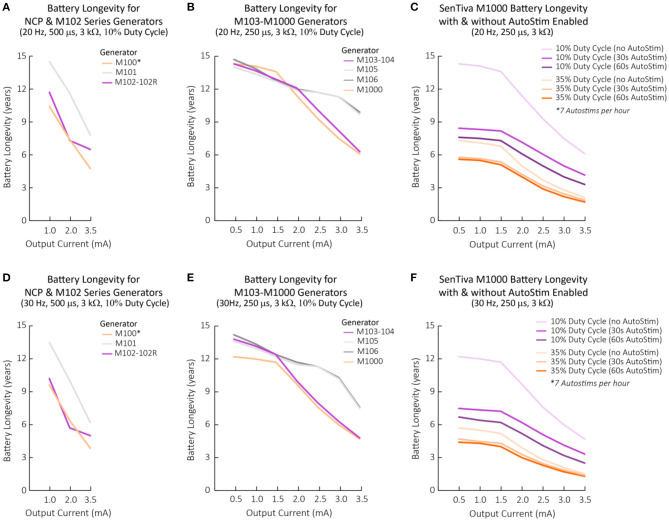Figure 4.
Battery longevity projections for each VNS Therapy generator with respect to programmed stimulation settings. Battery longevity projections under various stimulation parameter settings calculated based on modeling from a generator's beginning of life until EOS (3, 23). (A–C) Battery longevity projections for generators programmed at 20 Hz with a typical lead impedance of 3 kΩ across varying output currents. Other stimulation parameters are displayed above the graph in brackets and in the legend, if applicable. (D–F) Battery longevity projections for generators programmed at 30 Hz with a typical lead impedance of 3 kΩ across varying output currents. Other stimulation parameters are displayed above the graph in brackets and in the legend, if applicable. (A,D) 500 μs was the lowest tested pulse width reported for NCP generators (23). 500 μs was used for M102 series generators for comparison purposes. For the M100 generator, calculations for serial numbers >10,000 were used. (C,F) The M1000 battery longevity with and without AutoStim enabled. Calculations based on 7 AutoStims per hour. Note that figure should not be used to exactly predict battery EOS but illustrates the effect of various parameters changes on battery life. AutoStim, autostimulation; EOS, end of service; M, model.

